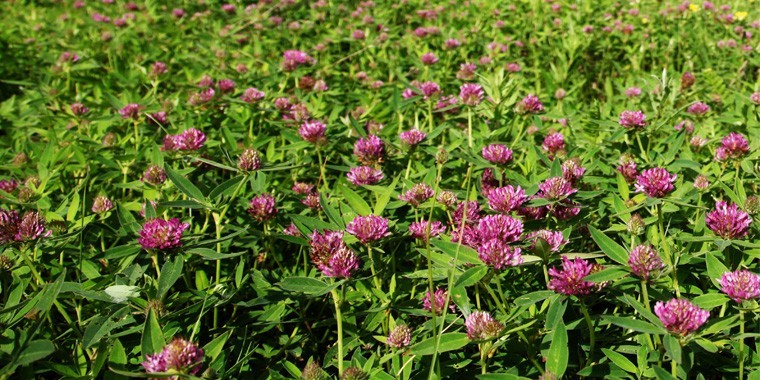Growing grass and forage crops could alleviate some of the pain of low cereal prices and resistant blackgrass according to Rod Bonshor, general manager for Oliver Seeds, particularly on more marginal sites with less combinable yield potential.
“Sowing crops such as lucerne or a grass/red clover mixture as a break between cereals, can have many benefits,” Mr. Bonshor explains.
“Frequent mowing over two to three years represses blackgrass growth, reducing weed seed production by as much as 90%. At the same time, deep rooting legumes promote good soil structure and boost natural fertility by fixing atmospheric nitrogen.”
Lucerne is ideally suited to light free-draining soils with a pH of 7. It has a yield potential of 13t dry matter (DM)/ha (5.2t DM/acre) per year, over the first two years, and produces a high protein feed that can be sold to dairy and beef farmers.
The crop is usually sown between April and August and will happily follow wheat. It usually requires minimal cultivations, as a sowing depth of only 1cm (0.4 inches) is required, at a rate of 20-25kg/ha (8-10kg/acre).
It can be harvested three to four times during the growing season, before being baled and wrapped in plastic. It should not be cut below a height of 10cm (4 inches) to protect the single growing point in the crown.
Red clover option
Red clover, sown on its own or with ryegrasses, can also produce high tonnages of high-quality, protein-rich forage – up to 19t DM/ha (7.7t DM/acre) per year, when grown in a mixture with grass.
Autumn is an ideal time for establishing red clover leys, as the legume can swamp young grasses if spring-sown.
“Growing forage crops may tie up fields for longer than normal within the rotation, but the positive contribution they can make to soil health and weed reduction will usually make up for this,” says Mr. Bonshor.




